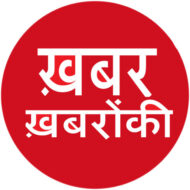
Ira Singh
Khabar Khabaron Ki,15 March’25
Union Commerce and Industry Minister Piyush Goyal on Friday emphasized that India’s trade negotiations with the United States will be guided by the principles of ‘India First’ and ‘Viksit Bharat.’ Speaking after his discussions with US Trade Representative Jamieson Greer, Goyal reportedly described the talks as “forward-looking” and indicative of progress toward a multi-sector Bilateral Trade Agreement (BTA). This marks his second visit to Washington, D.C., in a week, following earlier discussions with Greer and Commerce Secretary Howard Lutnick.
Strengthening the India-US Trade Relationship
Goyal’s visit comes as part of the broader commitments made by Prime Minister Narendra Modi and US President Donald Trump to finalize the first tranche of a mutually beneficial BTA by autumn 2025. His initial meeting took place amid Trump’s persistent criticism of India’s tariff policies.
Both countries are pushing to expand bilateral trade significantly, setting an ambitious goal—dubbed “Mission 500”—to double trade to $500 billion by 2030. Modi and Trump have underscored the importance of trade and investment in enhancing economic prosperity, bolstering national security, and deepening supply chain integration.
Trump has long urged for tariff reciprocity, maintaining that the United States must match tariffs imposed by trading partners, including India, to ensure fairness. US Trade Secretary Howard Lutnick recently reiterated Washington’s preference for a comprehensive trade agreement with India rather than focusing on product-specific negotiations. In response, sources indicate that India is prepared to “significantly” reduce its average applied tariffs on American goods to address US concerns.
High-Level BTA Negotiations Underway
The formal launch of BTA negotiations last week follows discussions initiated during Modi’s visit to the US in February 2025. Leading the Indian delegation, Goyal engaged in talks in Washington from March 3 to 6, meeting with Greer and Lutnick.
According to sources.the talks centered on increasing market access, reducing both tariff and non-tariff barriers, and strengthening supply chain linkages.“PM Modi and President Trump agreed to appoint senior representatives to advance negotiations. The discussions focus on creating greater market access, reducing tariffs and non-tariff barriers, and deepening supply chain integration,” said the official, who requested anonymity.
Reflecting on past negotiations, the official noted that previous efforts to finalize a bilateral trade pact during Trump’s first term did not yield results. However, the renewed dialogue aims to explore each dimension thoroughly to ensure a mutually beneficial agreement.
“For various reasons, prior efforts did not lead to an outcome. Since negotiations for a BTA have just commenced, it is too early to discuss specifics. Each aspect of the agreement will be considered in a manner that serves the interests of both nations,” the official added.
India’s Expanding Trade Partnerships
Beyond discussions with the United States, India is actively pursuing trade agreements with the European Union and the United Kingdom. These parallel negotiations underscore India’s broader strategy to enhance its global trade positioning and establish itself as a key player in international commerce.
Trump’s Continued Tariff Criticism
While both sides reaffirmed their commitment to the $500 billion trade target, Trump has maintained his stance against what he considers unfair trade practices by India.
Last week, the US President reiterated his discontent, branding India as the “tariff king” and condemning its restrictive trade policies.“India charges us massive tariffs. Massive. You can’t even sell anything in India… They have agreed, by the way, they want to cut their tariffs way down now because somebody is finally exposing them for what they have done,” Trump reportedly stated during a White House press briefing.
Despite these criticisms, the ongoing negotiations signal a willingness from both nations to address trade concerns and strengthen economic ties through a structured bilateral agreement. The coming months will be crucial in determining whether India and the US can finalize a trade pact that reflects their shared economic and strategic priorities.
